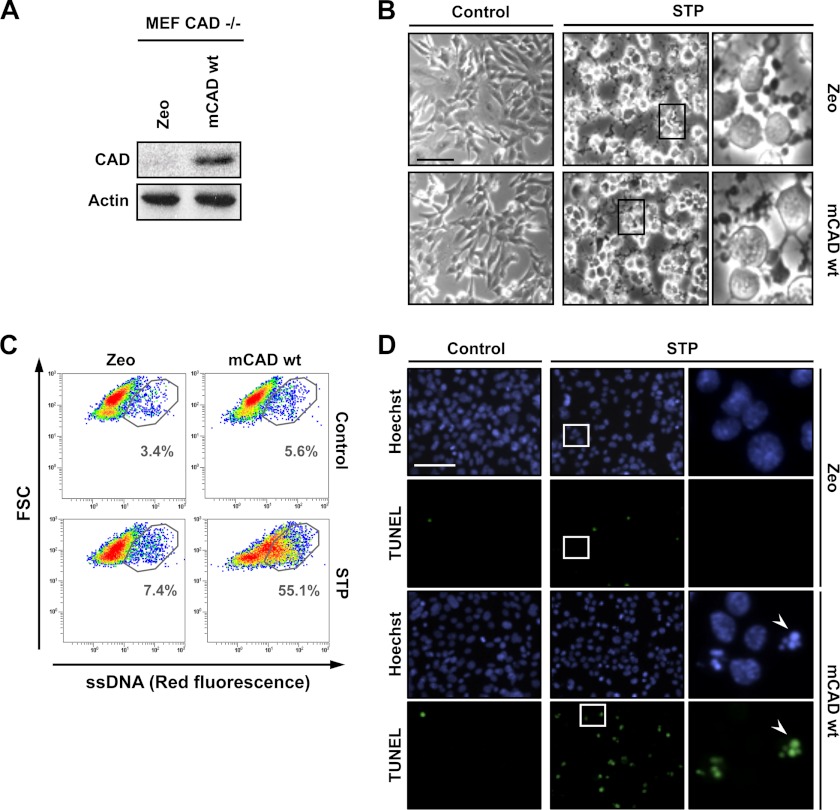FIGURE 9.
MEF CAD−/− cells develop the ability to display 3′-OH ssDNA damage and stage II apoptotic nuclear morphology after STP treatment when mCAD is overexpressed. A–D, MEF CAD−/− cells stably transfected with empty pAG3 (Zeo) or pAG3-mCAD wild-type (mCAD WT) were left untreated (Control) or treated with 1 μm STP for 10 h. A, total protein extracts from untreated cells were analyzed by Western blot analysis to confirm the overexpression of mCAD WT. The membrane was reprobed with an antibody against actin as a loading control. B, microphotographs using a phase contrast microscopy showing the morphological appearance of MEF CAD−/− Zeo or mCAD WT cells after the indicated treatment. The right panels are magnifications of the insets in the center panels. C, flow cytometry analysis of ssDNA damage using the monoclonal antibody F7-26. The data are shown as density plots representing size (y axis, in a logarithm scale) versus intensity of red fluorescence (x axis, in a logarithm scale). FSC, forward scatter of light. Cell density (events) is shown on a pseudocolor scale from minimum density (blue) to maximum density (red). The circled populations correspond to cells presenting ssDNA damage. The percentage of gated cells in each condition is indicated. The experiment was repeated three times with a low variability (< 5%). D, TUNEL reactivity and Hoechst nuclear staining were performed. The right panels are magnifications of the insets in the center panels. The arrowheads indicate an apoptotic nucleus that is positive for TUNEL. Scale bars = 40 μm.

